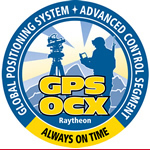Engineering Specialities
Galileo signal and code design, frequency management, compatibility and interoperability between different satellite navigation systems (at signal level), GNSS receiver performance and GNSS performance analyses.
His Compass Points
ByI have had many occasions to reflect on the unfortunate timing of the release of the Volpe Transportation Center report, “Vulnerability Assessment of the Transportation Infrastructure Relying on the Global Positioning System.”
Just to refresh our memories, the Volpe report came out on Monday, September 10, 2001.
By
 Bob Canty – Raytheon GPS OCX vice-president and program manager
Bob Canty – Raytheon GPS OCX vice-president and program managerBy now, the news is out: Raytheon Corporation’s Intelligence and Information Systems (IIS) business, has won the contract to build the Next Generation GPS Control Segment (OCX).
 One of 12 magnetograms recorded at Greenwich Observatory during the Great Geomagnetic Storm of 1859
One of 12 magnetograms recorded at Greenwich Observatory during the Great Geomagnetic Storm of 1859 1996 soccer game in the Midwest, (Rick Dikeman image)
1996 soccer game in the Midwest, (Rick Dikeman image)
 Nouméa ground station after the flood
Nouméa ground station after the flood A pencil and a coffee cup show the size of NASA’s teeny tiny PhoneSat
A pencil and a coffee cup show the size of NASA’s teeny tiny PhoneSat Bonus Hotspot: Naro Tartaruga AUV
Bonus Hotspot: Naro Tartaruga AUV
 Pacific lamprey spawning (photo by Jeremy Monroe, Fresh Waters Illustrated)
Pacific lamprey spawning (photo by Jeremy Monroe, Fresh Waters Illustrated) “Return of the Bucentaurn to the Molo on Ascension Day”, by (Giovanni Antonio Canal) Canaletto
“Return of the Bucentaurn to the Molo on Ascension Day”, by (Giovanni Antonio Canal) Canaletto The U.S. Naval Observatory Alternate Master Clock at 2nd Space Operations Squadron, Schriever AFB in Colorado. This photo was taken in January, 2006 during the addition of a leap second. The USNO master clocks control GPS timing. They are accurate to within one second every 20 million years (Satellites are so picky! Humans, on the other hand, just want to know if we’re too late for lunch) USAF photo by A1C Jason Ridder.
The U.S. Naval Observatory Alternate Master Clock at 2nd Space Operations Squadron, Schriever AFB in Colorado. This photo was taken in January, 2006 during the addition of a leap second. The USNO master clocks control GPS timing. They are accurate to within one second every 20 million years (Satellites are so picky! Humans, on the other hand, just want to know if we’re too late for lunch) USAF photo by A1C Jason Ridder.  Detail of Compass/ BeiDou2 system diagram
Detail of Compass/ BeiDou2 system diagram Hotspot 6: Beluga A300 600ST
Hotspot 6: Beluga A300 600ST

1. CHECK THE “ON” SWITCH
Grand Portage Reservation, Minnesota USA
√ Grand Portage reservation biologists collared eight moose with $5,000 GPS trackers that noted location, air temperature, and movement. A glitch turned the devices off. Helicopters found the herd via radio telemetry, netted and hobbled them so that researchers could flip the switch. Biologists, the GPS manufacturer, and the moose all survived the ordeal.
 Figure 2: Sample Enlil Prediction
Figure 2: Sample Enlil PredictionQ: How is solar activity predicted and how can predictions be used with GNSS?
A: Irregularities and turbulence in the ionosphere cause the largest errors imposed on GNSS applications. The ionosphere is created by the constant electromagnetic emissions from the Sun, and the largest disturbances in the ionosphere follow solar eruptions — flares and coronal mass ejections (CMEs).
ByAfter three decades of increasingly widespread use, satellite navigation-based services have changed significantly, especially for general users in the mass market. New technology enablers such as assisted GPS (A-GPS), the use of massively parallel correlation, and the application of advanced positioning techniques have significantly enhanced the time-to-first-fix (TTFF) and sensitivity of today’s receivers.
By